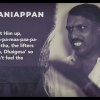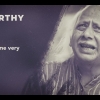In this incisive essay poet Robin Ngangom delineates the terrain of poetry in English in the long troubled Northeast. The textures and tensions of singing a variegated land and its diverse peoples—whose gods are also living hills and streams but who often face shades of discrimination from the centers of power in India—makes for vivid and necessary reading. This is a narrative of rupture and rapture, resistance and suffering and renewal.
It would be pointless to ask the new generation of poets from the Northeast who writes in English why they have chosen the coloniser’s language. The politics of language no longer concerns them; linguistic quarrels for them might well have been consigned to the archives of literary history. On the contrary, the new generation writes with a confidence which would be the envy of their older fellow poets.
In the English language poetry of the Northeast, one can discern an emerging tradition, an alternative to the poetry pioneered by the metropolitan poets of the 1960s and their present-day descendants. Schooled as they were in the Pound-Eliot academy, these metropolitan poets perfected a detached, formal, craft-driven poetry. It is a self-regarding, albeit passionless, ‘internationally minded’ pursuit, motivated by a fashionable philosophy of exile and alienation. The poetry of the Northeast, on the other hand, can be ‘statemental’ in comparison to the verbally-dazzling metropolitan artefact, rooted as against the alienated stance of modernist city poets, autobiographical as against the impersonal. If the modernist urban poets are deracinated, culturally uprooted cosmopolitans cast adrift in a sea of exotic arts and cultures, the Northeast poet is still ‘rooted’. In many of Kynpham Sing Nongkynrih’s poems, it becomes evident that the Khasi hills and its people define his roots and give him an identity. The Northeast poets are also not particularly concerned with technique, form, and symmetry; they are not remarkable experimenters with metre or craft. Their verse often lacks the linguistic sophistication of the metropolitan poets, and read like ‘translations’, as someone pointed out. Further, instead of the expected radical break with the near past, Northeast poetry written in English suggests a continuity with the past.
What are the distinguishing traits of Northeast poetry written in English? It is the native world, most of all, which comes into view in the work of these poets. A predilection for images and motifs drawn from nature is proof that Northeast poetry in English is deeply rooted in the land. ‘Nature’ is not an impassive witness to the existential despair of men and women as in the contemporary wasteland of modernist poets, but a living presence for the Northeast poets, where hills and rivers are also deities (‘Everything has life—rocks, stones, trees, rivers, hills, and all life is sacred,’ says Mamang Dai) (Agarwal 2008) and the fates of natives are inevitably intertwined with them. Thus, in spite of the trappings of modernity, the life of most communities of the Northeast is defined by their folk origins. The mythic world still survives at the frontiers of the civilised world, and the ‘folk’ still continues to assume the ‘intensity of reality’ for many. Myths provide a key to the cultural behaviour of a people, but when communities seem to be losing their way in the midst of cultural colonisation, mythopoeic poets, out of a deep-seated desire, step in and try to emulate the traditional storytellers and shamans by recalling the lore of the tribe. Aspects of Kynpham Sing Nongkynrih’s poetry, his spontaneous gift for wit and humour, for example, is perhaps a quality that he inherited from the ‘phawar’ tradition of the Khasis, which also points to the folk world and ‘ethnopoetics’, a non-Western ‘decentered poetics’ of indigenous people. The chronicling of contemporary events, the fallout of violence above all, is another important aspect of Northeast poetry in English. This has led to the charge that some Northeast poets are unduly obsessed with the poetry of politics and brutality. However, to be a tenacious witness to the agonising and recurrent political violence without sensationalising it, is also a risk that the Northeast poet has to undertake often. This is not the poetry of unquestioning ‘nationalism’ in the face of a fear of loss of identity and encroachment of territory and cultural values, but a nervous internalisation of the increasingly complex politics of the region. The phenomenon of ‘displacement’, which poets Nabanita Kanungo and Nabina Das have written about, is a compelling motif in the corpus of Northeast Poetry in English. The attempts to salvage deeply traumatic remembrances from a third generation’s perspective seem to indicate that ‘displacement’ leads to never-ending displacement and history’s refugees would find themselves homeless after the first uprooting.
Could there be regional varieties within English language poetry in India? Regionalism as a literary phenomenon seems to have arrived, the ‘regional’ often perceived in creative friction with the centre. If Mumbai and Delhi constitute the centre of English language poetry in India, Northeast poetry in English makes up the ‘regional’ and a gesture towards a decentered poetics. The alternative tradition offered by Northeast poetry has perhaps created a body of verse that is more approachable. Northeast poetry in English has great variety, the region being the home of diverse communities speaking different languages and embodying discrete cultures.
References
Agarwal, Nilanshu Kumar. 2008. ‘Fusion of Journalism and Poetry’. Thanal Online. 2(4).












